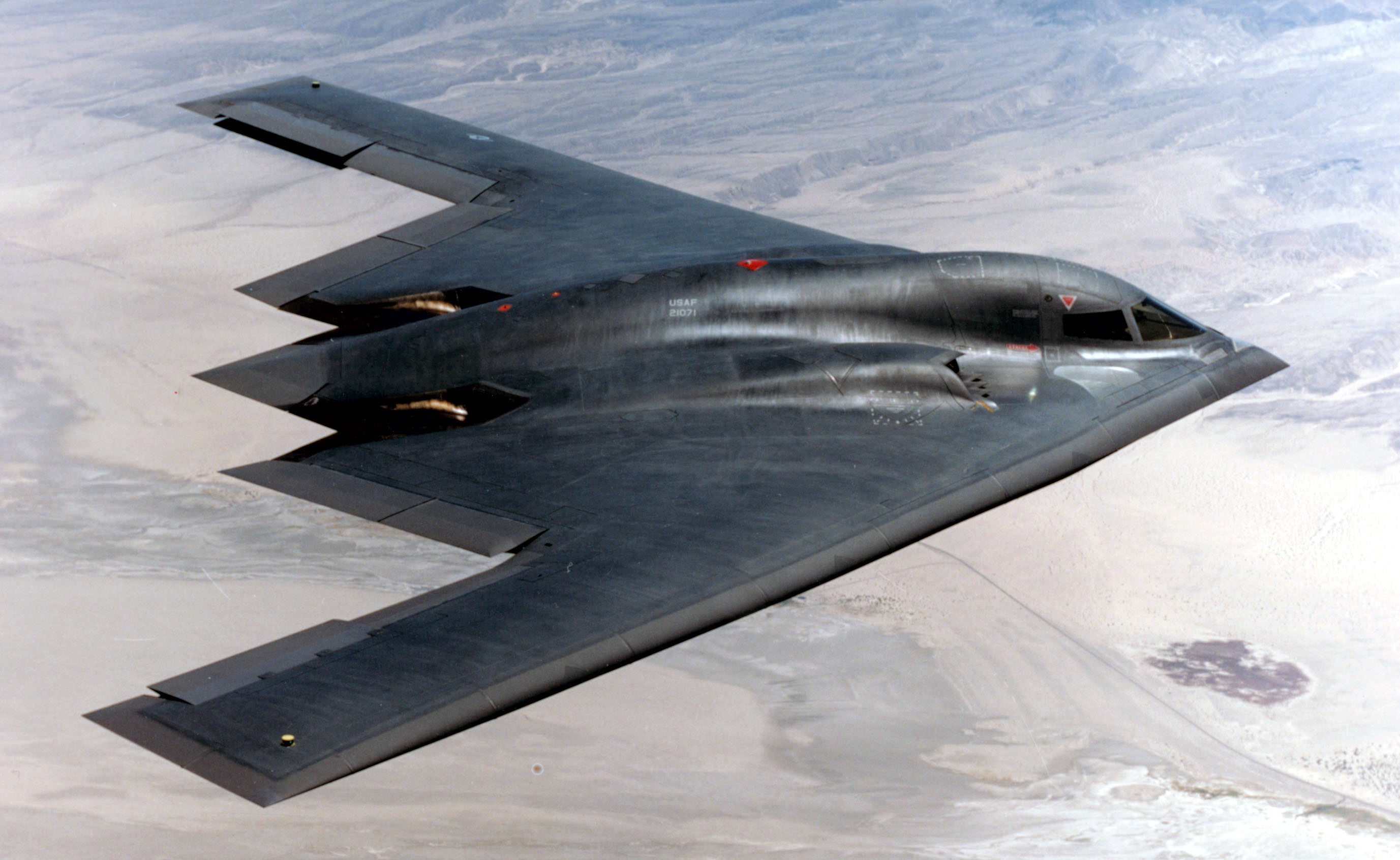One of the nice things about going on vacation is being disconnected from current events (even though the hotel Mrs. Blog and I stayed at helpfully provided a U.S.-focused photocopied summary of the day's news each morning). One of the bad things about that, though, is missing stuff like this:
Yep. That's another picture of what appears to be the same aircraft photographed here. The picture above was taken in Kansas, by a guy whose name seems really familiar to me for some reason. The other pictures were taken in Texas.
What they both have in common is a pretty clear "pure delta" shape--in other words, a plane that is basically a flying triangle. As far as I know there is no aircraft in the U.S. inventory shaped like that. Even the fanciest new drones--the X-47B, the RQ-170 and the RQ-180, for instance--do not have smooth trailing edges. Neither does the B-2:
So this once again appears to be a photograph of a large-ish aircraft of unknown purpose flying at high altitude (as indicated by the contrails) and below the speed of sound (as indicated by the lack of anyone hearing a sonic boom). This is almost certainly a brand-new program, and its flights over populated areas are almost certainly not mistakes.
Interesting side note: More than 20 years ago, the Navy was on the verge of acquiring a stealthy attack aircraft called the A-12 Avenger II. The program was canceled for costing too much and delivering, well, nothing. But guess what the nickname for the Avenger was? The Flying Dorito.
Looks a lot like what's in the Texas and Kansas photos, doesn't it? But by all accounts, the program was a dog and, quite literally, never got off the ground. The similarities are probably coincidental.
My guess is that the pictures show the long-planned Long-Range Strike Bomber. But given the frequency of these sightings, it's only a matter of time before we find out for sure.
It's a bird! It's a plane! It's... kind of like a Dorito.
Yep. That's another picture of what appears to be the same aircraft photographed here. The picture above was taken in Kansas, by a guy whose name seems really familiar to me for some reason. The other pictures were taken in Texas.
What they both have in common is a pretty clear "pure delta" shape--in other words, a plane that is basically a flying triangle. As far as I know there is no aircraft in the U.S. inventory shaped like that. Even the fanciest new drones--the X-47B, the RQ-170 and the RQ-180, for instance--do not have smooth trailing edges. Neither does the B-2:
Sawtoothed, not smooth.
So this once again appears to be a photograph of a large-ish aircraft of unknown purpose flying at high altitude (as indicated by the contrails) and below the speed of sound (as indicated by the lack of anyone hearing a sonic boom). This is almost certainly a brand-new program, and its flights over populated areas are almost certainly not mistakes.
Interesting side note: More than 20 years ago, the Navy was on the verge of acquiring a stealthy attack aircraft called the A-12 Avenger II. The program was canceled for costing too much and delivering, well, nothing. But guess what the nickname for the Avenger was? The Flying Dorito.
It never flew. But it did look like a snack chip.
Looks a lot like what's in the Texas and Kansas photos, doesn't it? But by all accounts, the program was a dog and, quite literally, never got off the ground. The similarities are probably coincidental.
My guess is that the pictures show the long-planned Long-Range Strike Bomber. But given the frequency of these sightings, it's only a matter of time before we find out for sure.





